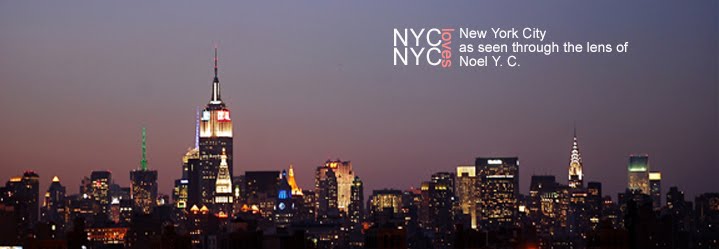On display outside Christie's Auction House in Rockefeller Center is Claes Oldenburg's giant "Typewriter Eraser, 1976." I made his image last April 12. This piece will be auctioned on May 13 during the Post-War and Contemporary Art Evening Sale at Christie's. Claes Oldenburg (born January 28, 1929) is best known for his public art installations typically featuring very large replicas of everyday objects. Another theme in his work is soft sculpture versions of everyday objects.
From Christie's website:
Lot Description
Claes Oldenburg (b. 1929)
Typewriter Eraser
signed, titled, numbered and dated 'Claes Oldenburg TYPEWRITER ERASER COPYRIGHT (C) 1976 CLAES OLDENBURG 3/3' (on the reverse)
painted aluminum, stainless steel, ferroconcrete and bronze
89½ x 80 x 70 in. (227.3 x 203.2 x 177.8 cm.)
Executed in 1976. This work is number three from an edition of three. 1/3, Virginia Museum of Fine Arts; 2/3, Nasher Collection.
Pre-Lot Text
PROPERTY FROM THE COLLECTION OF BETTY FREEMAN
Provenance
Margo Leavin Gallery, Los Angeles
Acquired from the above by the present owner on 18 August 1978
Literature
G. Celant, Claes Oldenburg: An Anthology, New York, 1995, p. 337 (another example illustrated in color).
Exhibited
The Art Institute of Chicago, 72nd American Exhibition, April 1976.
New York, Leo Castelli Gallery, Claes Oldenburg: Log, May 1974-August 1976, November 1976, pp. 100-108 (illustrated as a work in progress).
Lot Notes
Produced in 1976, Typewriter Eraser presents a giant disk-shaped eraser that appears to have just alighted on the ground, the bristles of its brush turned upward with a sense of dynamic grace. Oldenburg transforms this once ubiquitous office accessory into a grand monument. In 1970, he began to sketch its mass-produced form, placing it into imagined landscapes in order to explore the idea of using it for a giant public sculpture.
Oldenburg's fascination with elevating mundane objects to something "higher" first manifested itself in his Store project -- a "store-cum-art-gallery" -- first presented at the Martha Jackson Gallery in New York in 1961, and then resurrected in a shop-front on the Lower East Side of Manhattan. With the Store, Oldenburg embraced the commodities of materialist culture as subject matter, re-creating foodstuffs and merchandise in brightly painted plaster and kapok stuffed canvas. Spending time in Los Angeles in the fall and spring of 1963-64, Oldenburg was inspired to approach the product lines of industry and technology using manufacturing methodology, and he gradually began to abandon the malleability, tactility and fleshiness of his soft-sculptures to create works that could withstand the elements and that more accurately resembled the objects he was representing
The concept of typewriter eraser writ large had initially presented itself as "a fine anti-heroic subject" for a colossal sculpture to be placed outside an office plaza on Manhattan's Fifty-seventh Street. This now obsolete item of stationary had been a favorite plaything from the days when Oldenburg visited his father's office as a boy. Although this project was never realized, Oldenburg remained strongly attached to this strangely exuberant object and continued to use the idea for a number of drawings, prints and sculptures in varying scales and mediums, including this metal and cement version executed in a small edition of three.
Oldenburg's fixation on the metaphoric power of the things that surround us can be seen to stem from those Dada and Surrealist artists who extracted items encountered every day and elevated them into the rarified realm of art. His sculptures undergo a metamorphosis of scale similar to that found in the paintings of Magritte, yet Oldenburg does not tend to distort the function of his chosen objects or to place them in bizarre juxtapositions, but celebrates the singular qualities that distinguish them from all other things. He stated, "We do invest religious emotion in our objects. Look at how beautifully objects are depicted in ads on Sunday newspapers. It's all very emotional. Objects are body images, after all, created by humans, filled with human emotion, objects of worship" (C. Oldenburg, quoted in M. Rosenthal, "Unbridled Monuments; or, How Claes Oldenburg Set Out to Change the World," Claes Oldenburg: An Anthology, New York, 1995, p. 259).

2 comments:
You have to express more your opinion to attract more readers, because just a video or plain text without any personal approach is not that valuable. But it is just form my point of view
I really like when people are expressing their opinion and thought. So I like the way you are writing
Post a Comment